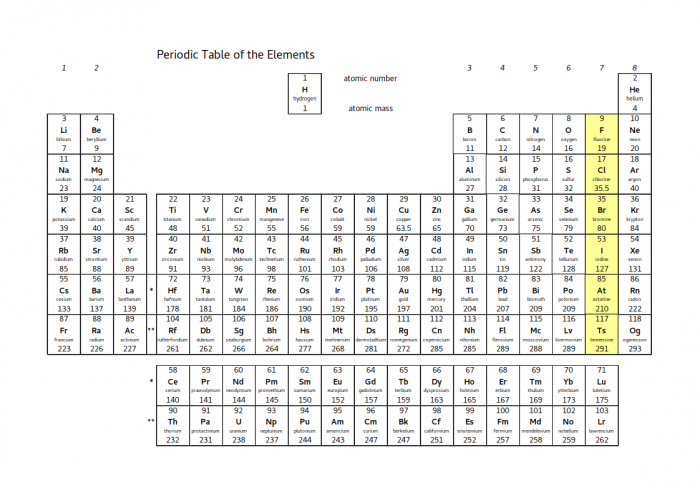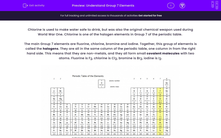Chlorine is used to make water safe to drink, but was also the original chemical weapon used during World War One. Chlorine is one of the halogen elements in Group 7 of the periodic table.
The main Group 7 elements are fluorine, chlorine, bromine and iodine. Together, this group of elements is called the halogens. They are all in the same column of the periodic table, one column in from the right hand side. This means that they are non-metals, and they all form small covalent molecules with two atoms. Fluorine is F2, chlorine is Cl2, bromine is Br2, iodine is I2.

All the halogens are very reactive, which is why they are good for killing microbes. Chlorine is used to purify water, and iodine is used to clean wounds, stopping them from becoming infected. Fluorine is the most reactive halogen, then the reactivity decreases as you go down Group 7.
Elements go in the same group of the periodic table because they have the same number of electrons in their outermost electron shell. For halogens, there are seven electrons in the outermost shell, so all halogens need one more electron to have a stable outermost shell. Chlorine (atomic number 17) is 2.8.7, so it looks like this:

All the halogens have seven electrons in their outermost shells, and one empty site. The single empty site explains why the halogens are so reactive - they are very close to having a stable outer shell, so will react strongly with other elements to capture another electron.
Halogen reactions
All the halogen elements react with other elements in similar ways. There are two reactions you need to know:
alkali metal + halogen → alkali halide
For example, sodium + chlorine → sodium chloride (chlorine becomes chloride)
potassium + bromine → potassium bromide (bromine becomes bromide)
hydrogen + halogen → hydrogen halide
For example, hydrogen + chlorine → hydrogen chloride
hydrogen + bromine → hydrogen bromide
Group 7 trends
As you go down Group 7 (from fluorine to astatine):
The elements become less reactive.
The melting point and boiling point increase (so they are less likely to be a gas at room temperature).
The colour becomes darker.
The key thing to know about Group 7 is the arrangement of the electrons in the outermost shell, the ways they are used, as well as the way that halogen compounds are -ides.
Try the questions to see how well you can use these ideas.








